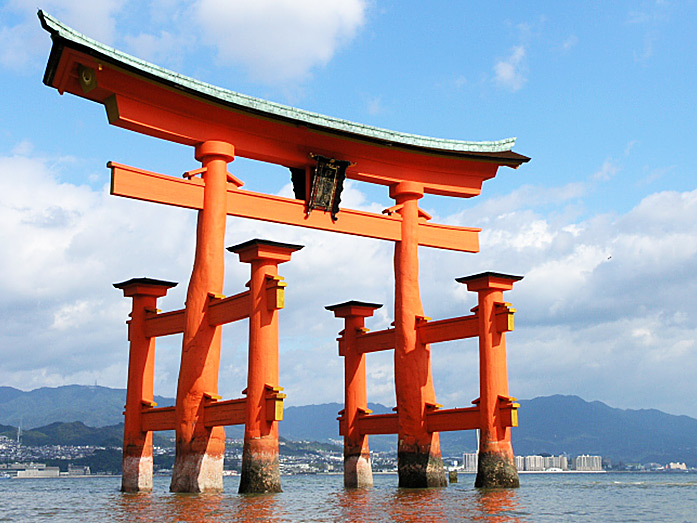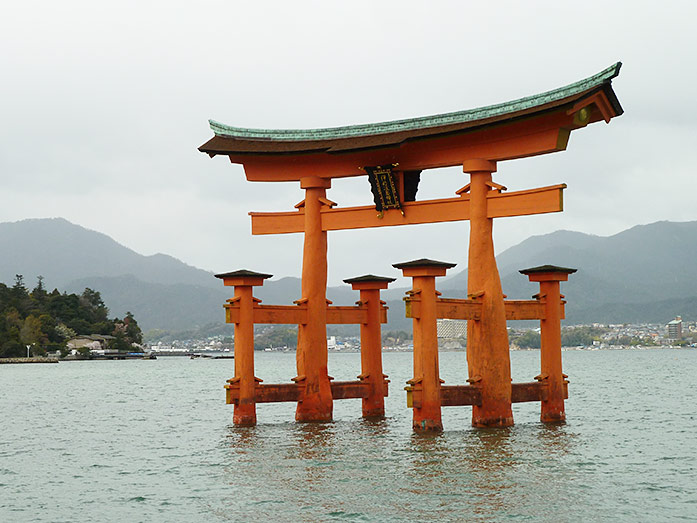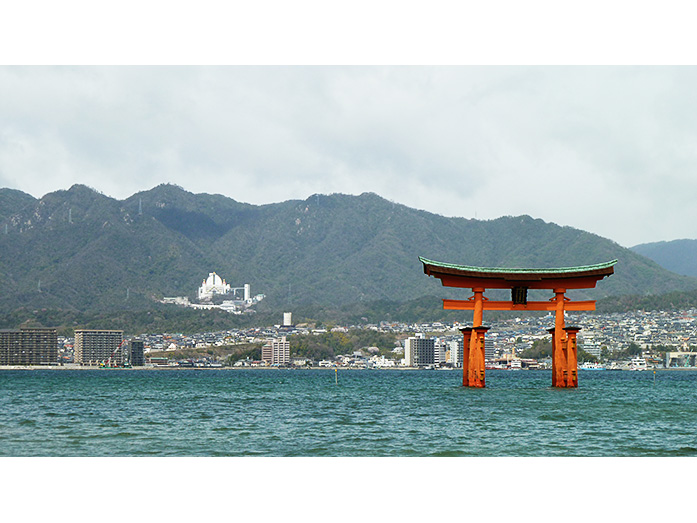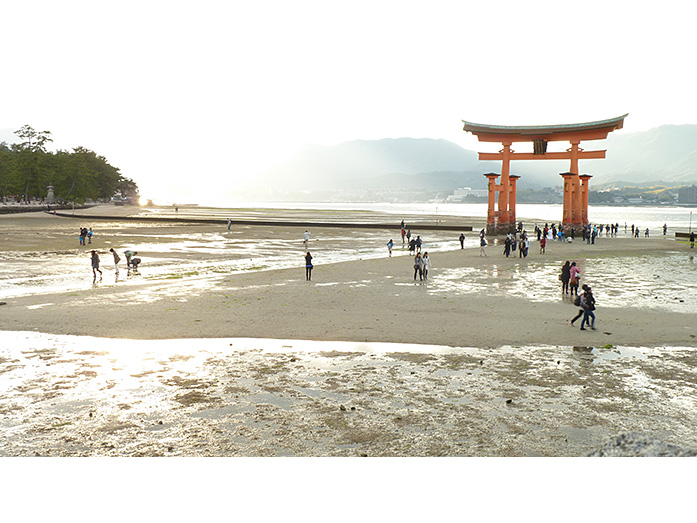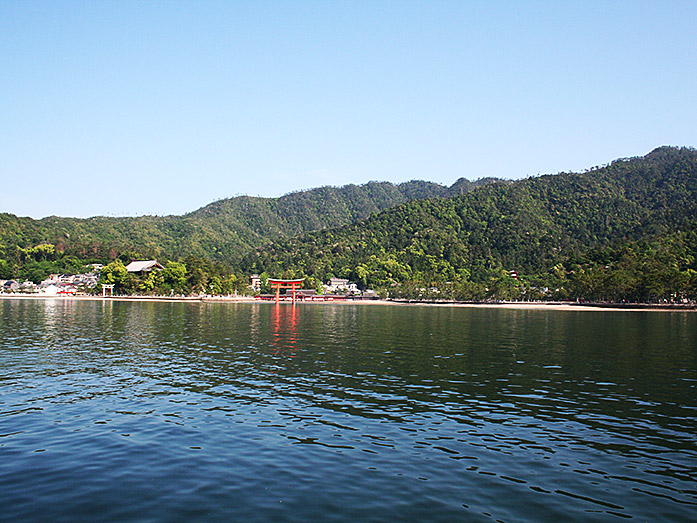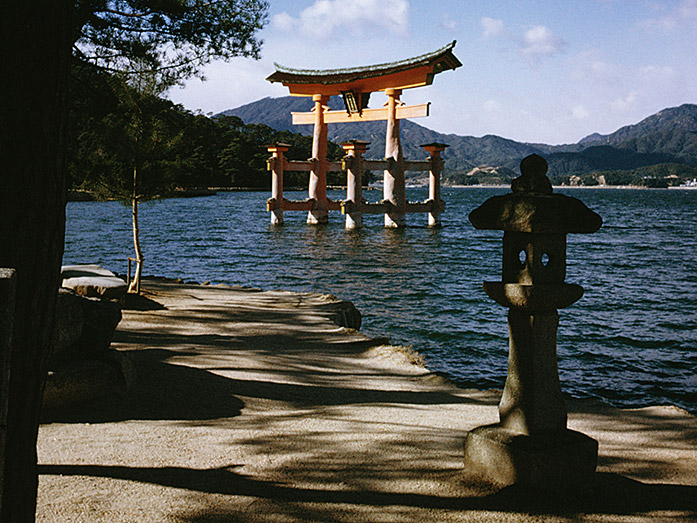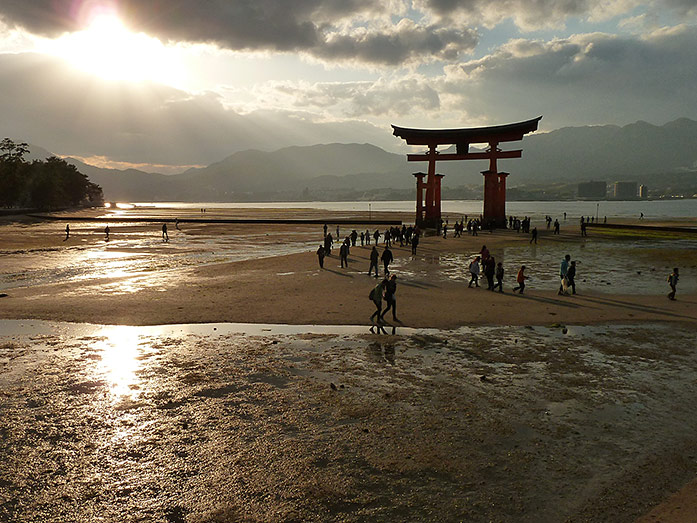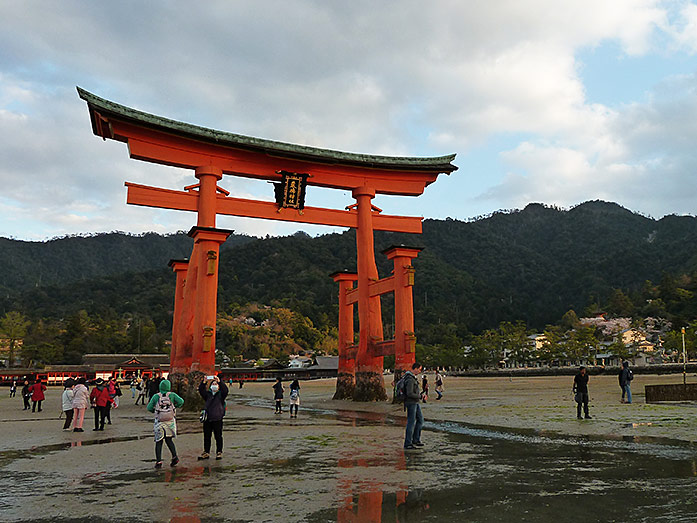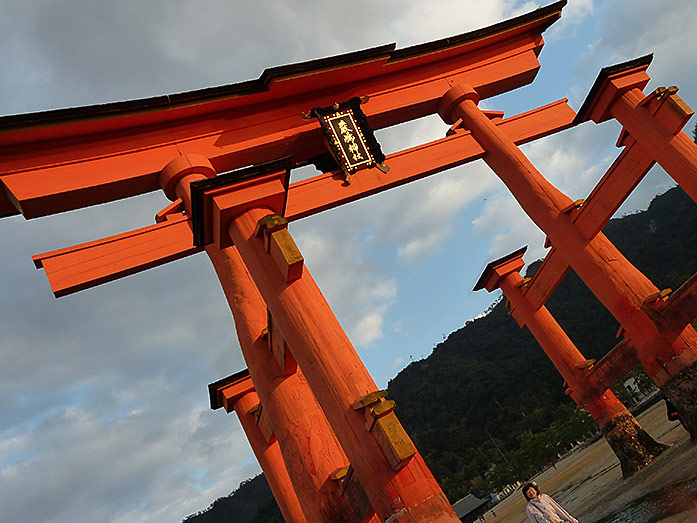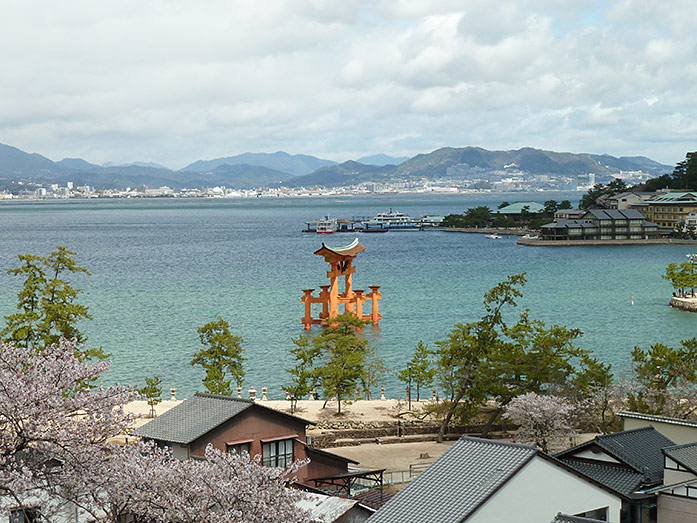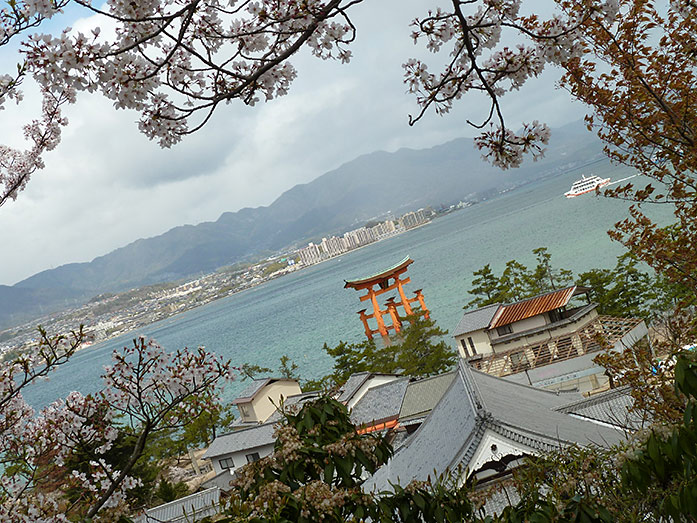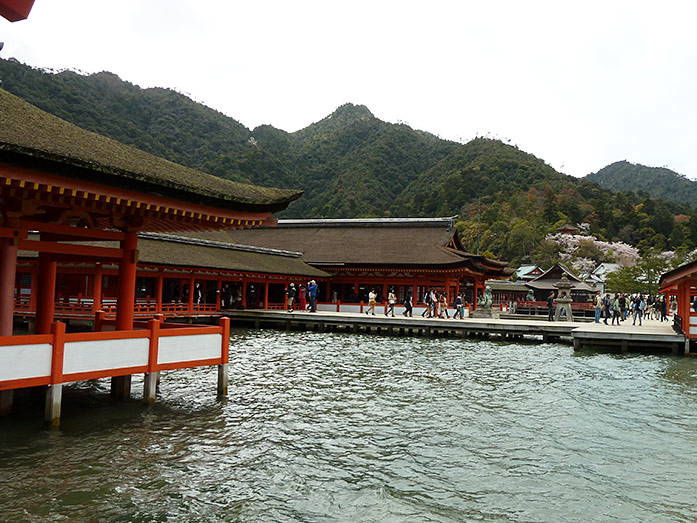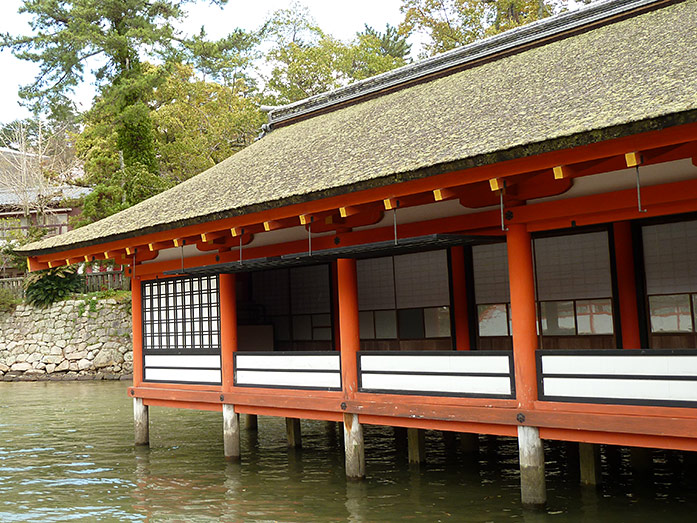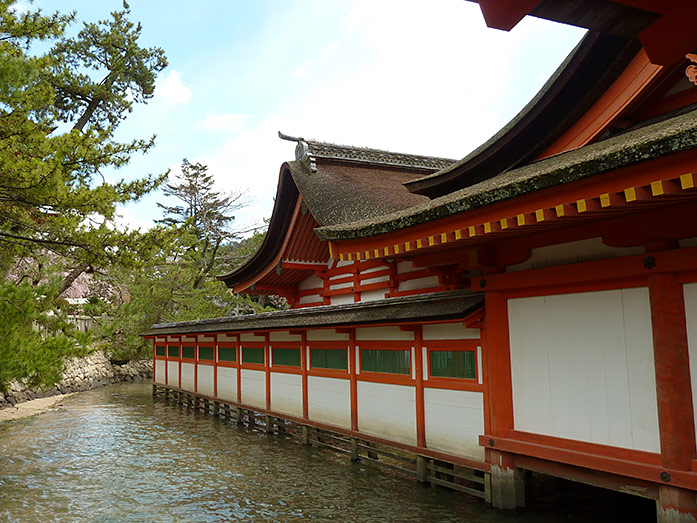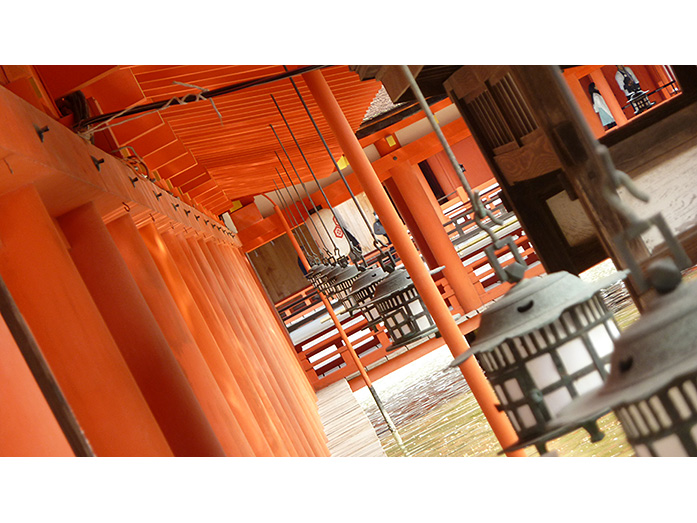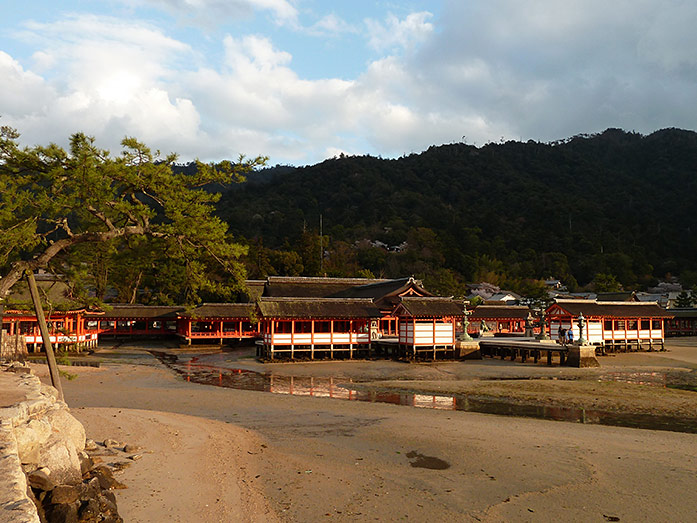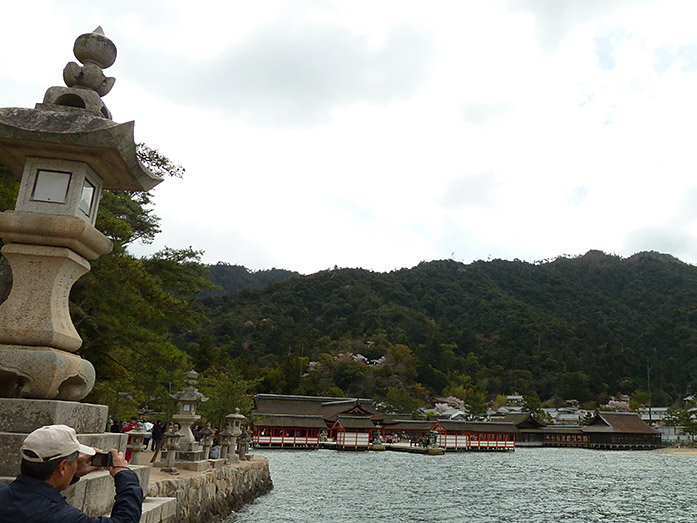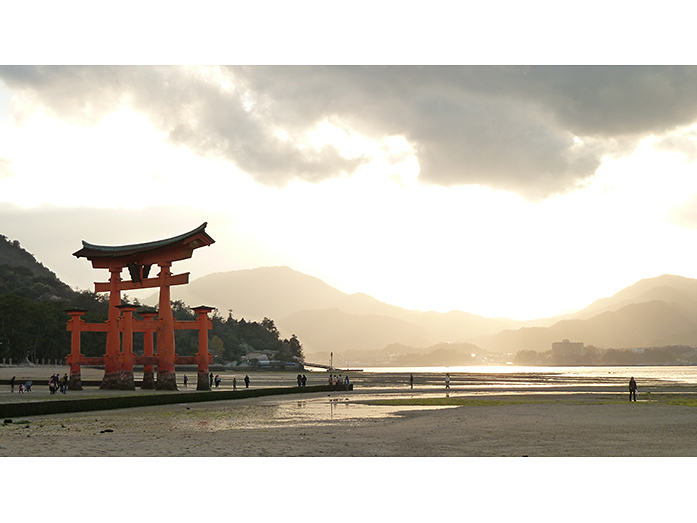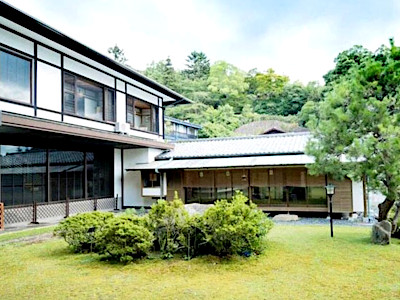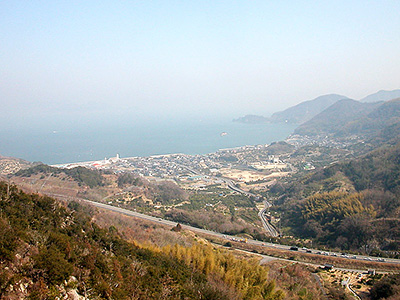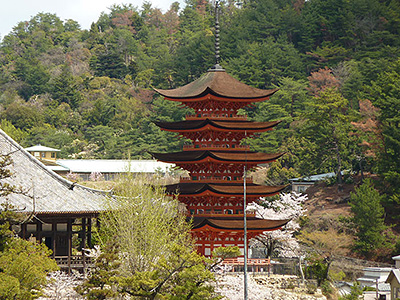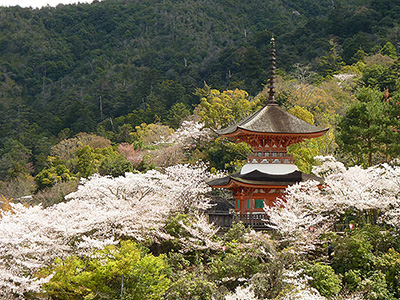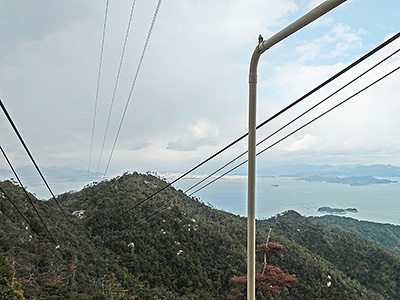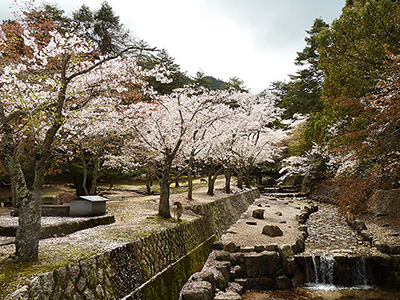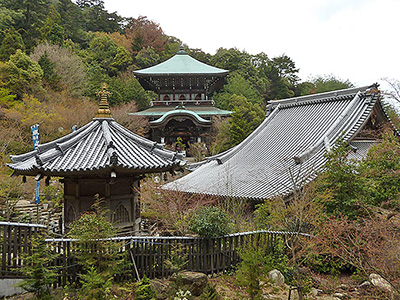Itsukushima Shrine on Miyajima
This post can contain affiliate links, which means that we may receive a small commission if you make a purchase using these links.
Facts & Figures
The Itsukushima Shrine (Itsukushima-jinja) is a Shinto Shrine and UNESCO World Heritage Site on Miyajima, a small island near Hiroshima. Interesting to know that Itsukushima stands for "island of worship". The famous vermillion-colored Torii Gate is a landmark sign and is known all over the world. It is considered one of the three most scenic views of Japan. The other two are Amanohashidate (Kyoto Prefecture) and Matsushima Bay (Miyagi Prefecture). Itsukushima-jinja belongs to the - Three Great Shrines of Aki Province - together with the Hayatani Shrine and Take Shrine.
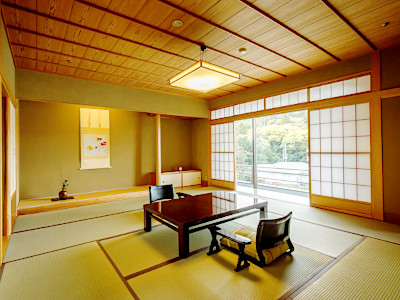 Best Places to Stay on Miyajima >
During low tide, you can even walk to the O-Torii gate, but during high tide, the shrine and torii appear to be floating over the sea. Important: At the shrine's main entrance you will find a schedule of the day’s high and low tides. Enjoy the view from the wooden boardwalks of the shrine above the Seto Inland Sea. The shrine complex covers an area of 431.2 hectares and consists of 37 wooden buildings for the inner shrine and 19 for the outer shrine. All buildings stand on pillars above the water. You will find there for example a Noh theater stage, a hondo (main hall) and, a prayer hall. The architectural style of the buildings is called Shinden-zukuri. Connected by covered wooden corridors, the buildings are adorned with bronze lanterns from the early 20th century. It is a sacred place where the three daughters of Susano-o no Mikoto are worshipped. The names of the daughters are Tagorihime no mikoto, Tagitsuhime no mikoto and Ichikishimahime no mikoto. These three female deities are known as sanjoshin - goddesses of seas and storms. During the Heian period (794 - 1185) members of the Imperial Court, such as former Emperor Go-Shirakawa (1127 - 1192), started to worship these deities and suddenly the former regional shrine became popular on a national level. To entertain the members of the court classical court dances were performed. This art form is called bugaku. Even today you can see such dances during the New Year's festivals and on the Emperor’s birthday. My tip: Do not miss the chance for a 30-minute boat tour to enjoy the view of the illuminated shrine and island. The illumination ends at 11:00 pm. Combine this with a stay in a ryokan there and your Japan experience cannot get any better.
Best Places to Stay on Miyajima >
During low tide, you can even walk to the O-Torii gate, but during high tide, the shrine and torii appear to be floating over the sea. Important: At the shrine's main entrance you will find a schedule of the day’s high and low tides. Enjoy the view from the wooden boardwalks of the shrine above the Seto Inland Sea. The shrine complex covers an area of 431.2 hectares and consists of 37 wooden buildings for the inner shrine and 19 for the outer shrine. All buildings stand on pillars above the water. You will find there for example a Noh theater stage, a hondo (main hall) and, a prayer hall. The architectural style of the buildings is called Shinden-zukuri. Connected by covered wooden corridors, the buildings are adorned with bronze lanterns from the early 20th century. It is a sacred place where the three daughters of Susano-o no Mikoto are worshipped. The names of the daughters are Tagorihime no mikoto, Tagitsuhime no mikoto and Ichikishimahime no mikoto. These three female deities are known as sanjoshin - goddesses of seas and storms. During the Heian period (794 - 1185) members of the Imperial Court, such as former Emperor Go-Shirakawa (1127 - 1192), started to worship these deities and suddenly the former regional shrine became popular on a national level. To entertain the members of the court classical court dances were performed. This art form is called bugaku. Even today you can see such dances during the New Year's festivals and on the Emperor’s birthday. My tip: Do not miss the chance for a 30-minute boat tour to enjoy the view of the illuminated shrine and island. The illumination ends at 11:00 pm. Combine this with a stay in a ryokan there and your Japan experience cannot get any better.
- Miyajima Itsukushima Shrine:
- Opening Hours - 6:30 am to 6:00 pm - March to October
- Opening Hours - 6:30 am to 5:00/5:30 pm - November to February
- Admission Fee - Adults: 300 yen, High school student: 200 yen, School child: 100 yen
- Illumination - daily, after sunset till 11:00 pm
My tips for local activities
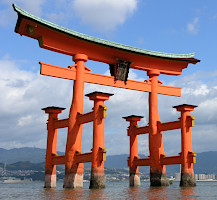
How about exploring Itsukushima Shrine on Miyajima and other sightseeing spots in Hiroshima with an English-speaking tour guide? The personalized tour by our partner GetYourGuide can take between 4 - 6 hours. For more details check out this page >
History
In 593 the main shrine was built by Saeki Kuramoto. It was the year when Empress Suiko (554 - 628) ascended the throne. Saeki Kuramoto was an important person in Saekibe (the name of an ancient guild that provided the king with guards) during the first year of the Suiko period (593 - 628). Warlord and governor of Aki Province Taira no Kiyomori (1118 - 1181), head of the Heike clan, made in 1168 (Heian Period) the Itsukushima Shrine even more beautiful. During this time visitors arriving by boat had to pass under the O-Torii gate and then enter Itsukushima-jinja. Changes to the layout of the shrine occurred after huge fires in 1207, and 1223 and a typhoon in 1325. The present main sanctuary was constructed in 1571 by daimyo Mori Motonari (1497 - 1571). The famous floating torii you see today was built in 1875. The only original structure dating back from the Kamakura period (1185 – 1333) is the Kyakuden (Guest-God's Shrine). During the Edo period (1603-1868) Itsukushima Shrine was the most popular pilgrimage destination together with the Ise Shrine and Shrines of Shikoku for people living in the western part of Japan. To maintain the purity of the Itsukushima Shinto Shrine the decision was made in 1878 that no births or deaths are allowed to happen close to the shrine. Therefore you will find no cemetery on Miyajima Island. To this day pregnant women have to leave the island short before the delivery of the baby. In 1996 Itsukushima Shrine and the surrounding forest of Mount Misen (535m) were declared a UNESCO World Heritage Site. The Typhoon Songda in 2004 caused huge damage to the Itsukushima Shrine. After some repair work the shrine was opened for the public again. 2008 was the year when 150 years of diplomatic relations between France and Japan were celebrated. This led to the signing of a sister city affiliation in 2009 between the city of Hatsukaichi, including Miyajima, and Mont-Saint-Michel.
Location

Itsukushima Shrine is located on Miyajima Island within the city Hatsukaichi in the southwestern part of the Hiroshima prefecture.
Address: 1-1 Miyajimacho, Hatsukaichi, 739-0588 Hiroshima Prefecture
How to get to Itsukushima Shrine?
- 4-5hrs from Tokyo to Hiroshima Station by JR Tokaido-Sanyo Shinkansen Line
- 25min from Hiroshima Station to Miyajima-guchi Station by JR Sanyo Line and
- 10min from Miyajima-guchi Station to Miyajima by ferry
- 10min from ferry pier to the shrine
Sightseeing spots
within the Itsukushima Shrine area:
O-Torii gate - The gate is made of 600-year-old camphor wood. The height of the gate is 16 meters and the total weight is approx. 60 tons, which makes it a really impressive sight. It is located 160 meters from the shore. The last renovation of the gate, which was built in 1875, started in June 2019.
Main Shrine - This National Treasure consists of Honden (main hall), Haiden (worship hall), Heiden (offering hall), and Haraiden (purification hall). Enshrined deities are Ichikishimahime-no-mikoto, Tagorihime-no-mikoto and Tagitsuhime-no-mikoto. The Main Shrine is one of the biggest in Japan.
Marodo Shrine - The shrine is designated as a National treasure and the primary auxiliary shrine of the Itsukushima Shrine. Marodo Shrine consists of Honden (main hall), Haiden (worship hall), Heiden (offering hall), and Haraiden (purification hall). Enshrined deities are Ameno-oshihomimi-no-mikoto, Amenohohi-no-mikoto, Amatsuhikone-no-mikoto, Ikutsuhikone-no-mikoto and Kumanokusubi-no-mikito.
East Corridor - The vermillion-colored wooden corridor connects the Main Shrine with the Marodo Shrine. It is an architectural highlight with its Kirizuma-zukuri-style roof.
Asazaya - This hall is an Important Cultural Property and was used as a meeting place for Buddhist and Shinto priests.
Noh theater stage - The stage was constructed over water and is unique for Japan. This Important Cultural Property was donated by Mori Motonari (1497-1571). The current building dates back to 1680. It was constructed by daimyo Asano Tsunanaga (1659 - 1708).
Daikoku Shrine - The shrine is an Important Cultural Property.
Tenjin Shrine - The shrine was built in 1556. Sugawara no Michizane (845 - 903), a poet, politician, and scholar, is enshrined in this place. He was also known under the name Kan Shojo.
Soribashi - This wooden arched bridge is 3.9 meters wide and 23.7 meters long. It has the status of an Important Cultural Property.
nearby:
Senjo-kaku - This huge wooden hall was built in 1587 by Toyotomi Hideyoshi (1537 - 1598). It is the largest building on Miyajima Read more >
Miyajima-cho - The only village on the island Miyajima has the name Miyajima-cho. At the moment 1942 people living there and in 2005 it was merged with the city Hatsukaichi. Read more >
Mount Misen - The view from the top of the holy mountain (530m) is amazing. Read more >
Daiganji - It is an important Buddhist temple and dedicated to the Goddess Benzaiten. The temple dates back to the Heian period (794 to 1185).
Daishoin Temple - This Shingon temple is one of the most important in the western part of Japan. Read more >
Miyajima Aquarium - This place reopened in August 2011. It is a Seto Inland Sea-themed aquarium.
Museum of Historical and Folklore Materials - The museum was constructed in 1830's. It houses 3000 items about the Miyajima history.
Momijidani Park - The park is located at the base of Mount Misen. The best time to visit here is during the Autumn season.
Goju-no-to (Five-Storied Pagoda) - The vermillion-colored pagoda with a height of 27.6 meters is an impressive sight. Read more >
Taho-to - The beautiful pagoda is located south of Itsukushima-jinja. Read more >
Omoto Park - It is one of the best cherry blossom spots on Miyajima island. Read more >
Festival & Events (dates can change without notice)
February
Miyajima Oysters Festival (9th till 10th)
Miyajima is famous for its oysters. This festival gives you the chance to enjoy this delicious food.
March
Kiyomori Festival (22nd)
The Itsukushima Shrine prayer parade is held from 1 pm to 3 pm.
April
Noh stage performance (16th-18th)
Every year Shin Noh (Noh stage play dedicated to deities) is performed here.
July/August
Kangensai Festival (held in late July or early August, depending on the lunar calendar date of the 17th of June)
The largest annual religious festival at the Itsukushima Shrine is dating back to the Heian period. it starts at 4 pm and lasts until midnight.
Miyajima Water Fireworks Display (11th of August)
Every year more than 300 000 visitors enjoy this spectacle. It is considered to be one of the most famous in Japan.
November
Hiwatarishiki in Daiganji (3rd)
Monks from Miyajima island walk over the fire during the ceremony. If you are brave enough you can join them:)

